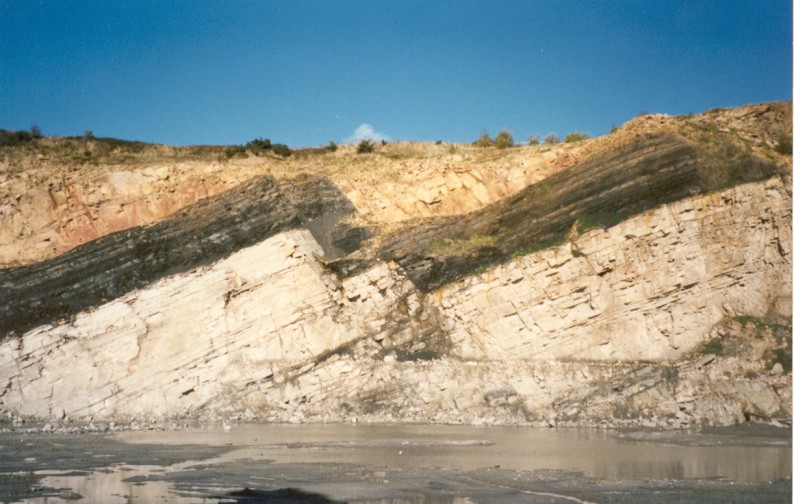

Quarry face showing 2 normal fault surfaces in the Upper Carboniferous sandstone and shale sequence of Round O Quarry, Lancashire, UK. The aggregate displacement on the two fault surfaces is 15m. These fault surfaces link laterally within 50m of existing quarry face, but also link within the observation plane (the face is not flat). The fact that the faults link within the face is reflected in the apparent marked decrease in displacement on the footwall fault from the top of the lower sandstones to the top of the shales (a complementary upward displacement change is seen on the hangingwall fault); the footwall fault links through the shales onto the hangingwall fault.
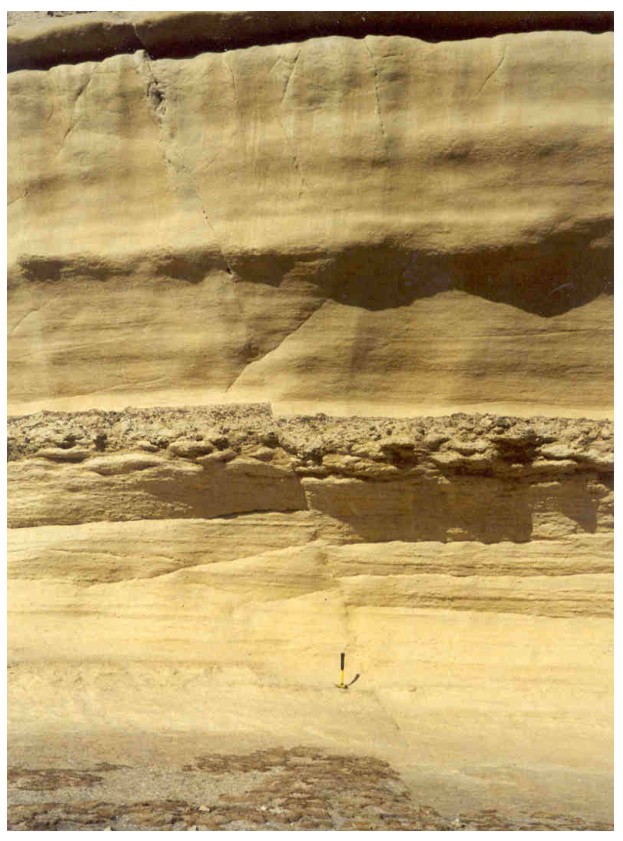
Small normal fault with 5cm displacement within the limestones of Malta.
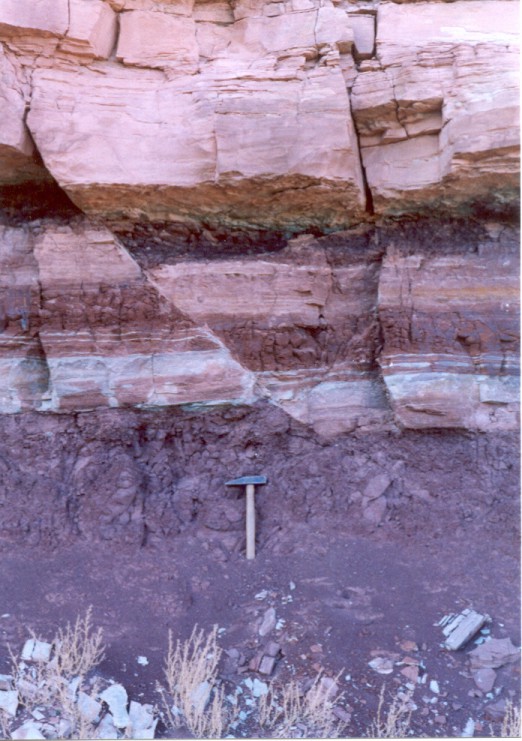
Small normal fault with ca 10cm displacement within the Jurassic sandstones and shales of the Moab Anticline, Utah, USA.
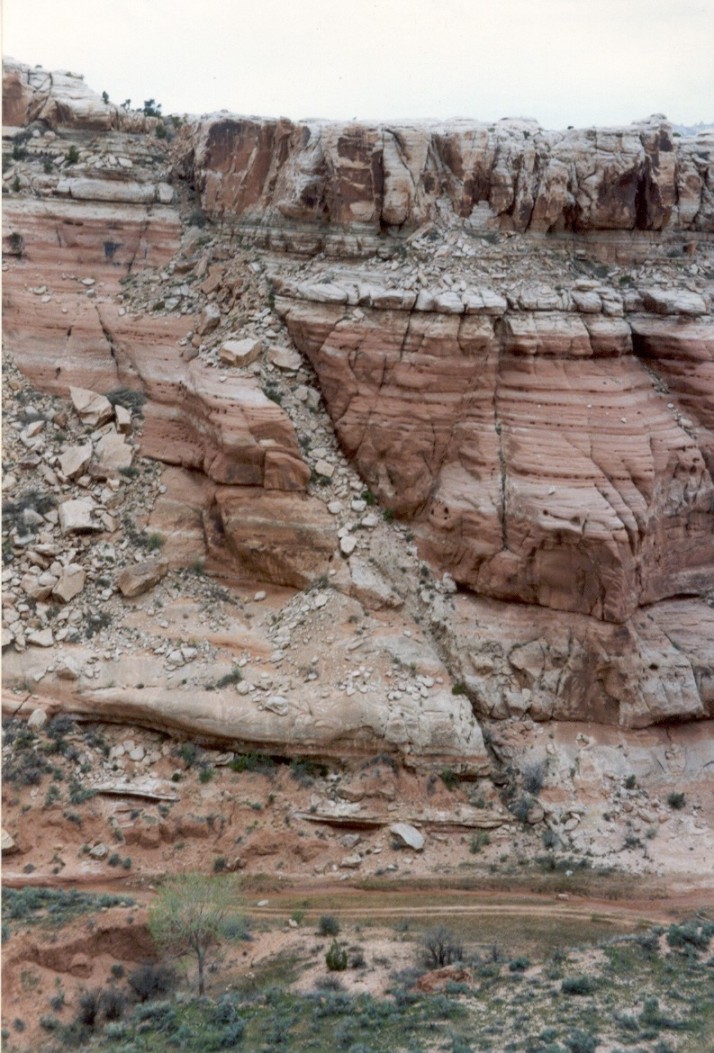
Normal fault with ca 30m throw (vertical displacement) at Mill Canyon, Moab, Utah. The offset sequence comprises the Moab Tongue sandstone at the top, through the remainder of the Slick Rock sandstones into the Dewey Bridge member at the very base. Notice that rubble is concentrated between two bounding fault surfaces which link towards the single surface at the base.
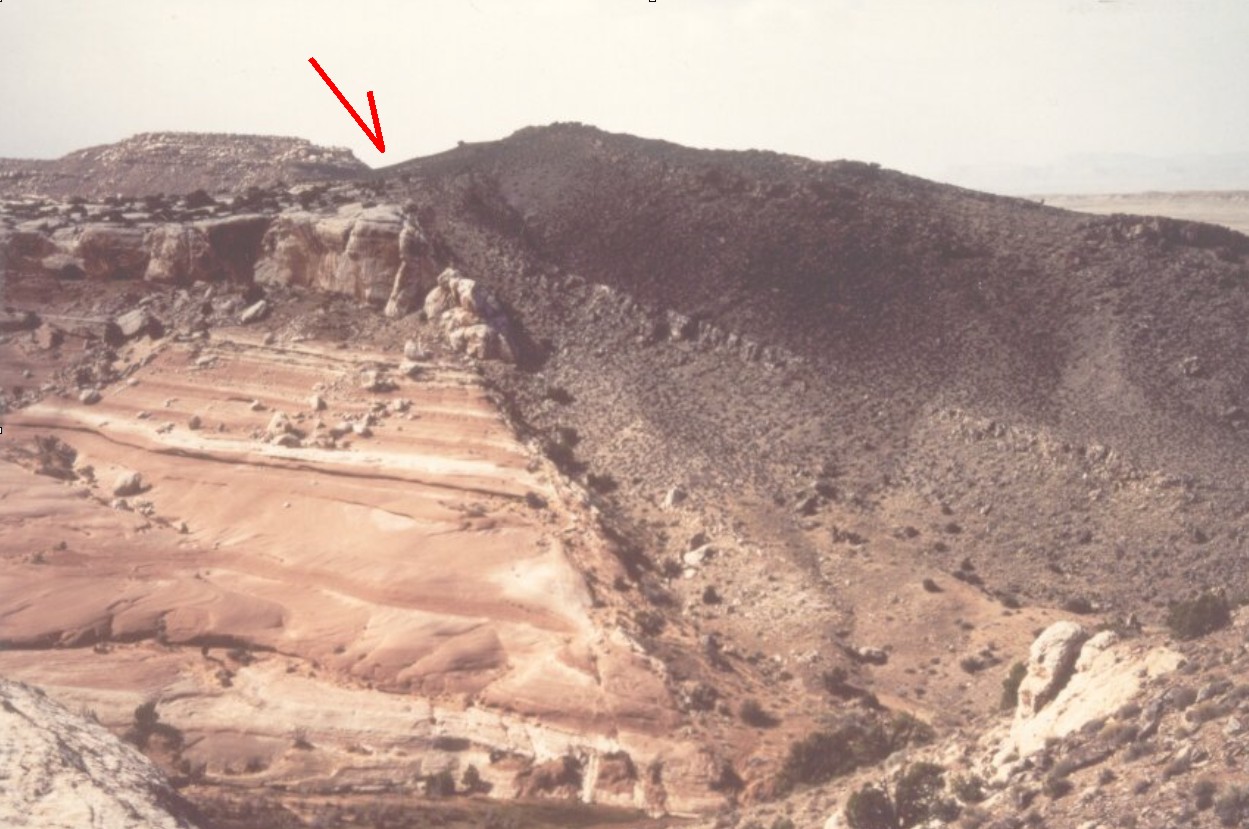
Moab Fault at Bartlett Canyon. The fault has 400m throw at this point and juxtaposes the Upper Jurassic Dewey Bridge member to Moab Tongue sandstones against Lower Cretaceous Cedar Mountain Formation sandstones and shales. The latter show a very well developed drag folding.
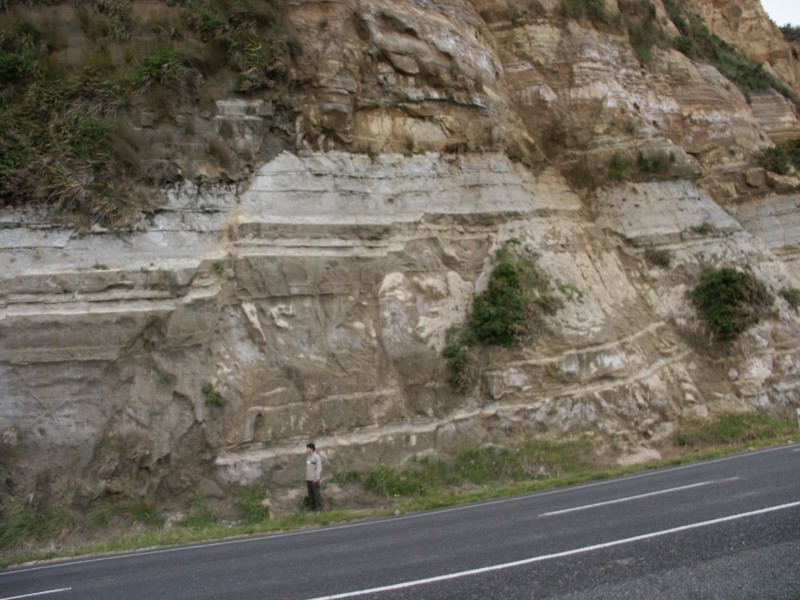
Conjugate normal faults, with ~1m displacements, within the Tertiary turbidites of the Taranaki Basin, New Zealand.